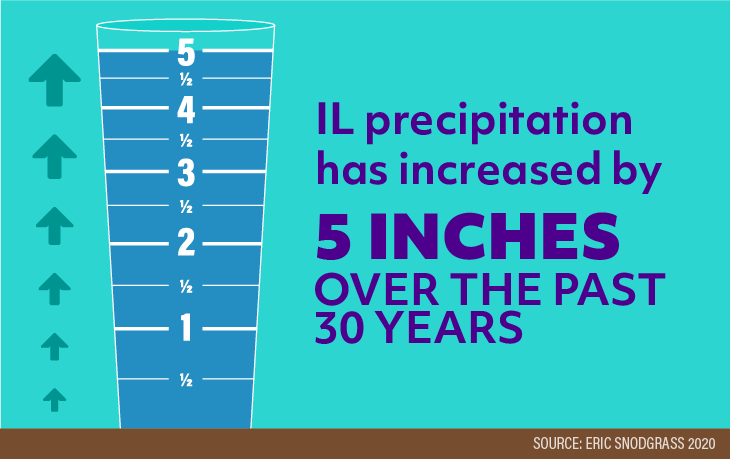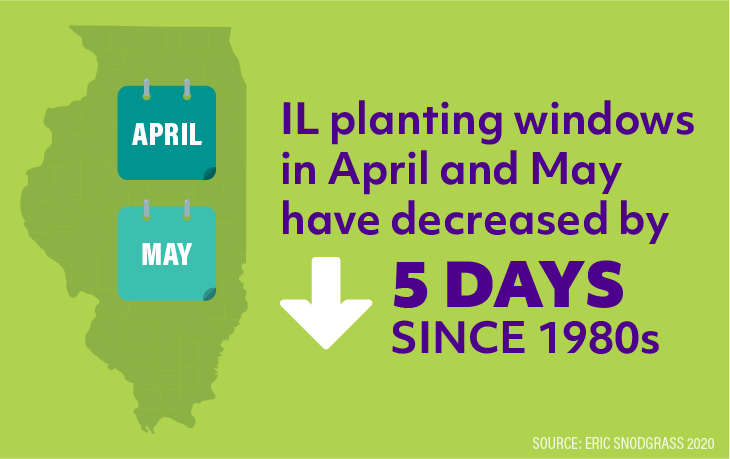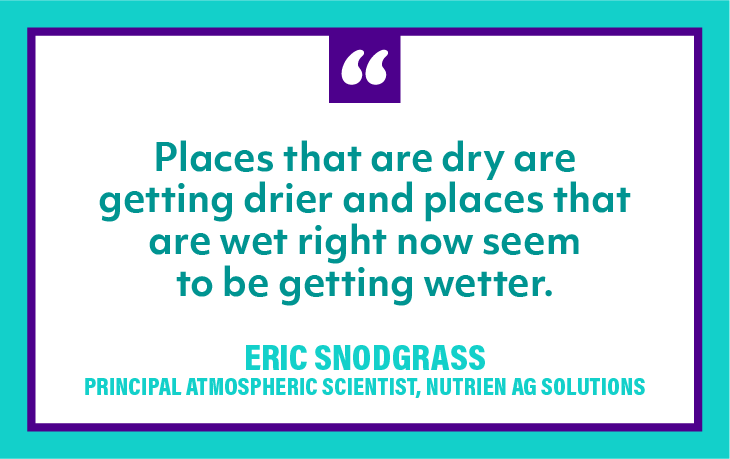Illinois Sustainable Ag Partnership (ISAP) is hosting a risk management webinar series this summer. Recaps of the presentations and a link to the full presentations will be provided here after each webinar.
The June 18 webinar focused on climate risk and how farmers can adapt. Eric Snodgrass, Principal Atmospheric Scientist at Nutrien Ag Solutions, started by presenting data on the climate changes Illinois farmers have experienced over the past 30 years. Most farmers can anecdotally support that we are getting precipitation differently, i.e., rain events have been heavier and dry periods longer. But is the distribution around the state of Illinois changing, and is it measurable enough to affect yield variance? The data provides some interesting insights about how Illinois farmers have needed to adapt to these changes over time.


On average, annual Illinois precipitation has increased by five inches and the frequency of 1- to 2-inch rainfall events in April and May has doubled. The impact of this means that Illinois planting windows in April and May have been reduced by approximately 5 days since the 1980s, which includes a loss of 2.5 dry days. In addition, temperatures have been steadily changing, impacting humidity levels and precipitable water.
The Illinois growing season minimum temperatures have increased 3 degrees since 1970. This corresponds to a precipitable water increase of 15% and 6% increase in relative humidity. To summarize all the data and how the rest of the 21st century will likely look, Snodgrass’ comment was simply “Places that are dry are getting drier and places that are wet right now seem to be getting wetter.”
 The impact of these changes on Illinois farmers was addressed by Keith Schilling, a state geologist for the Iowa Geological Survey. Much of Schilling’s research is done in Iowa but translates to what is seen on Illinois farms and waterways. Understanding hydrology and the pathway of water can lead to finding the right on-farm solutions and can have an impact on nutrient runoff that leads to streams. The nitrate load leaving the state of Iowa has doubled in recent years, and more precipitation and greater intensity will increase phosphorus export driven by runoff from sloping agricultural lands.
The impact of these changes on Illinois farmers was addressed by Keith Schilling, a state geologist for the Iowa Geological Survey. Much of Schilling’s research is done in Iowa but translates to what is seen on Illinois farms and waterways. Understanding hydrology and the pathway of water can lead to finding the right on-farm solutions and can have an impact on nutrient runoff that leads to streams. The nitrate load leaving the state of Iowa has doubled in recent years, and more precipitation and greater intensity will increase phosphorus export driven by runoff from sloping agricultural lands.
Another impact seen by farmers year to year is on claims for federal crop insurance. Data shared by Schilling shows that the cause of loss in crop insurance claims goes back and forth between excess moisture and drought. This illustrates the ongoing need for farmers to be resilient in handling different amounts or frequency of rainfall.
Kris Reynolds, Midwest Director of American Farmland Trust, commented on some of the steps farmers are taking to mitigate stresses. Reynolds is seeing the use of a lot of cover crops to hold nutrients in the soil and as a weed suppressant. Some farmers have been hesitant to plant into a tall cover crop but found it was easier than they expected. They have also looked to vertical or aerial seeding to ensure a fall cover crop can be planted. Overall, Reynolds commented that farmers are encouraged to make these voluntary changes to protect the nutrients in their soil and to avoid potential regulations moving forward.
Click here to view the full webinar or follow this link to register for additional webinars in the series.


 and then
and then